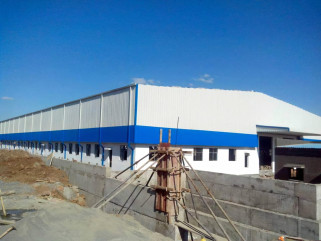Composite Roofing in PEB Sheds: A Durable and Lightweight Alternative
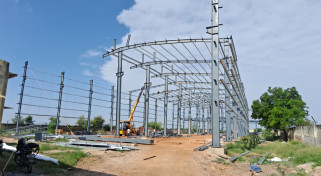
Composite roofing, especially when used in PEB shed roofing, has emerged as a game-changing solution for modern industrial, commercial, and warehouse structures. As businesses seek roofing materials that combine strength, durability, energy efficiency, and minimal maintenance, composite panels for roofing offer the perfect blend.
If you’re planning or upgrading a pre-engineered building (PEB), understanding the value of lightweight roofing materials like composite panels can help you make informed decisions that deliver long-term benefits in performance, cost, and sustainability.
What is Composite Roofing?
Composite roofing refers to roofing systems made from multiple materials—often combining metal, insulation foam, and protective coatings—to form durable, lightweight panels. These panels are manufactured to offer superior thermal insulation, weather resistance, and load-bearing capacity, making them ideal for roofing for pre-engineered buildings.
Why Composite Roofing is Ideal for PEB Sheds
PEB sheds are designed for speed, efficiency, and versatility. Whether it's an industrial warehouse, cold storage, or logistics hub, the roof plays a vital role in energy efficiency, safety, and maintenance costs. Here’s why composite roofing is gaining popularity:
1. Lightweight Yet Strong
Unlike conventional RCC or heavy GI sheets, composite roofing panels are engineered to be lightweight without compromising strength. This reduces the overall dead load on the PEB structure, allowing for:
- Lower structural steel usage
- Easier handling and faster installation
- Lower transportation and labor costs
2. Durable Roofing Solutions
Composite panels are resistant to corrosion, UV rays, water ingress, and temperature fluctuations. With life spans ranging from 20 to 40 years (depending on the coating), they are built to last, even in demanding climates.
3. Superior Thermal Insulation
Most composite roofing panels come with polyurethane foam (PUF) or mineral wool cores, acting as natural insulators. This reduces internal heat gain and can cut down HVAC energy costs by 30–50%.
4. Fire Resistance and Safety
Fire-rated composite panels (Class A or Class B) ensure that your industrial shed meets safety codes and mitigates fire hazards. This makes composite roofing for PEB a smart choice for chemical industries, food processing plants, and storage units.
5. Low Maintenance Roofing for PEB
Once installed, composite roofing needs minimal upkeep. It resists mold, mildew, rust, and pest infestation. Cleaning schedules are fewer, and surface coatings prevent staining or degradation.
Composite vs. Metal Roofing in PEB Structures
| Feature | Metal Roofing | Composite Roofing |
| Weight | Heavier | Lightweight |
| Insulation | Poor without add-ons | Built-in thermal insulation |
| Noise Control | Noisy during rain/wind | Noise dampening |
| Energy Efficiency | Low | High |
| Fire Resistance | Moderate | High (with fire-rated cores) |
| Maintenance | Prone to rust & leaks | Low maintenance |
| Lifespan | 10–25 years | 25–40 years |
| Installation | Faster | Slightly slower but more efficient long-term |
As seen above, while metal roofing may seem cost-effective upfront, composite roofing offers better long-term value and ROI in industrial environments.
Applications of Composite Roofing in PEB Sheds
- Warehouses & Logistics Parks: Temperature control and fast installation
- Cold Storage Units: Excellent insulation for controlled environments
- Manufacturing Units: Fire-rated, noise-resistant, and safe roofing
- Commercial Sheds: Aesthetic finish and long-lasting structure
- Agricultural Sheds: Moisture-resistant and pest-proof roofing
Environmental and Energy Benefits
In today’s sustainability-driven world, choosing energy-efficient and eco-friendly roofing options is no longer optional—it’s a necessity.
- Reduced Carbon Footprint: Better insulation means reduced energy usage for cooling
- Recyclability: Many composite roofing materials are recyclable at the end of their life cycle
- Green Building Credits: Contribute towards LEED or GRIHA certifications
Why Metrosh Recommends Composite Roofing for PEB
At Metrosh, we’ve implemented composite roofing in numerous PEB projects across sectors—ensuring clients get durable, long-lasting, and future-ready roofing solutions. Our expertise includes:
- Custom roofing panel specifications (PUF, mineral wool, EPS)
- Weather-resistant coatings
- Flame-retardant systems
- Skilled installation and technical support
Conclusion
As PEB structures continue to dominate industrial construction, the demand for roofing options for industrial sheds that are efficient, safe, and cost-effective will keep rising. Composite roofing checks all the right boxes—offering a low-maintenance, durable, and lightweight solution that stands the test of time and elements.
When compared with traditional metal roofing, composite panels deliver more value in terms of energy savings, safety, and operational cost reduction—making them the best roofing choice for PEB shed roofing.
If you're planning a new industrial shed or upgrading your existing roofing system, Metrosh can guide you with the right materials, specifications, and installation expertise.
Popular Searches
Pre-Engineered Buildings | Civil Construction | Hybrid Constructions | Best Construction Company
FAQs: Composite Roofing for PEB Sheds
1. What is composite roofing in PEB sheds?
Composite roofing in PEB sheds refers to roofing systems made using multi-layered panels combining materials like metal sheets, insulation foam, and protective coatings. These panels provide enhanced thermal insulation, durability, and fire safety—making them ideal for industrial and commercial PEB structures.
2. How is composite roofing different from traditional metal roofing?
Unlike traditional metal sheets, composite roofing includes built-in insulation and noise-dampening layers. It is lighter, more energy-efficient, and has better resistance to fire, corrosion, and weather-related wear and tear.
3. Is composite roofing suitable for all types of climates?
Yes, composite roofing performs well in a wide range of climates—from hot and dry regions to humid or coastal areas. Its insulation properties and resistance to corrosion, UV rays, and water ingress make it suitable for Indian weather conditions.
4. Does composite roofing help reduce energy consumption in PEB sheds?
Absolutely. The built-in insulation in composite panels significantly reduces heat gain inside sheds, minimizing the need for air conditioning or cooling systems. This leads to lower energy bills and reduced operational costs.
5. Is composite roofing fire-resistant and safe for industrial use?
Yes. Many composite panels come with fire-rated cores like mineral wool, offering excellent fire resistance. This makes them a safe option for industrial facilities dealing with machinery, chemicals, or flammable materials.
Related Articles
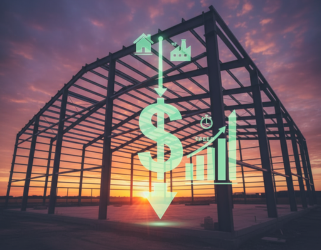
Why Pre-Engineered Buildings Are the Ultimate Cost-Saving Solution?
24 Sep 2025
Strong, Durable, and Long-Lasting: The Structural Superiority of PEBs
23 Sep 2025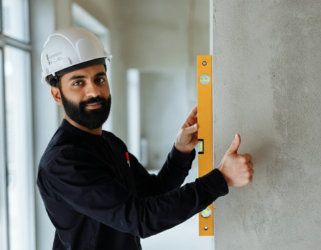
Quality Control in Civil Construction: Metrosh Infra’s Standards and Practices
22 Sep 2025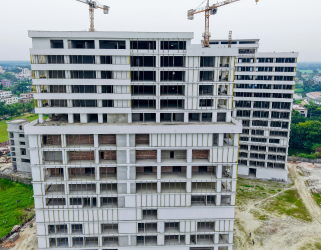
Cost-Efficiency in Hybrid Construction: Balancing Budget and Quality
22 Sep 2025
Building the Future: Metrosh Infra’s Approach to Turnkey Civil Construction
20 Sep 2025